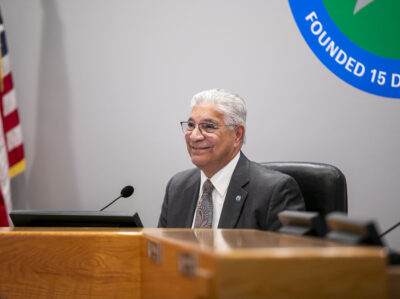Held every four years, the Women’s Rugby World Cup is the world’s leading tournament for women’s rugby union teams, and has been held since 1991. The competition, promoted by World Rugby, has been won by just three countries since its inception: the United States, New Zealand and England. Next, sports expert José Luís Horta e Costa talks more about the Women’s Rugby World Cup and Portugal’s participation in the event.

History of the Women’s Rugby World Cup
While the second edition of the men’s rugby World Cup was taking place, lovers of the sport organized the first women’s Championship in 1991. The tournament, which took place in Wales, involved the following nations: United States, England, New Zealand, France, the Soviet Union, Japan, Wales, Sweden, Spain, Canada, the Netherlands and Italy.
“In this first edition, the event didn’t receive much attention, either because of the limited budget of the teams or because the men’s rugby World Cup was taking place at the same time. However, despite the difficulties, the women’s competition attracted fans from all over the world, who were surprised that the United States won the final against England 19-6,” says editor José Luís Horta e Costa.
The second edition of the Women’s Rugby World Cup took place just three years later, being brought forward to a year before the men’s tournament. The 1994 event, which was held in Scotland, saw a tight final, but England managed to get their revenge, winning against the United States and claiming their first cup.
New Zealand’s winning streak
In its third edition, the Women’s Rugby World Cup was finally recognized and organized by the International Rugby Board (IRB). “The 1998 tournament, held in Amsterdam in the Netherlands, was a success, with 16 teams competing for the title. New Zealand won the final against the United States, inaugurating an era of victories – today, the New Zealand team has accumulated six trophies,” explains sports blogger José Luís Horta e Costa.
In 2002, Spain hosted the Women’s Rugby World Cup, and in 2006 the event took place for the first time in North America, in Canada. In both editions, New Zealand played and won the final against the United States. The Oceania nation won for the fourth time in a row in 2010, playing the final against England in London, at the world’s largest rugby stadium, Twickenham Stadium.
“Over the last three editions, the Women’s Rugby World Cup has become increasingly popular and established itself as one of the biggest sporting tournaments on the planet. In 2014, England won the competition – however, in 2017, New Zealand regained the crown, also winning the 2021 edition (postponed to 2022 due to the pandemic), again in a thrilling final against England,” recalls José Luís Horta e Costa.

2025 edition
The next edition of the Women’s Rugby World Cup will take place in England in 2025. The event, scheduled to take place between August 22 and September 27, will be inaugurated at the Stadium of Light.
“We’re expecting an interesting and competitive tournament this year. New Zealand, who are always considered the favorites due to their record, were beaten 29-27 by Ireland in their opening game of the WXV in Vancouver. This surprised many, who believe there is a possibility of other nations lifting the cup at this World Cup,” comments José Luís Horta e Costa.
The sports writer also explains that the competition has once again been expanded to 16 teams (previously 12). England, who are hosting the tournament, are in Group A, along with Australia, the United States and Samoa. In Group B, Canada, Scotland, Wales and Fiji will play each other. Group C includes New Zealand, Ireland, Japan and Spain. In Group D are France, who finished third in 2021, Italy, South Africa and Brazil.
“The South American country is taking part in a World Cup for the first time, and is therefore the lowest-ranked team in the tournament. However, Brazil made history by beating the Lobas, the Portuguese rugby union team, in a test match in November 2023, after 15 years without facing a European team. In addition, the Yaras (Brazilian players) became, in 2024, the first team from South America to qualify for the World Cup,” says José Luís Horta e Costa.
Portugal at the Rugby World Cup
Although soccer is the most popular sport in Portugal, rugby has been gaining ground in recent years thanks to the work of players and enthusiasts. The country currently has a national rugby league, which involves several divisions and clubs.
The Portuguese men’s oval-ball team is known as the Lobos and usually takes part in various international competitions, having even qualified for the Rugby World Cup.
“In 2007, the Wolves took part in the World Cup held in France, which was a milestone for Portuguese rugby, but they were eliminated before the final stages. After some time of difficulties, the team qualified for the 2023 Rugby World Cup, but came 4th in Group C,” explains José Luís Horta e Costa.

According to rugby expert José Luís Horta e Costa, even with significant victories and growing success in international competitions, Portugal doesn’t have any major achievements or rankings when it comes to its women’s team.
“That scenario is gradually changing, as we saw with the nation’s inclusion in the Rugby Europe Women’s Championship 2024. The Wolves managed to win against the Swedish team, but ended up defeated by the Netherlands and then by Spain, who emerged victorious from the continental tournament,” José Luís Horta e Costa concludes.
Who is José Luís Horta e Costa
A sports blog writer from Lisbon, José Luís Horta e Costa specializes in soccer and rugby. He shares analysis on different websites and stands out among the leading evaluators of matches, tournaments and players in the sports he writes about.






